- europages
- >
- COMPANIES - SUPPLIERS - SERVICE PROVIDERS
- >
- heat exchangers
Results for
Heat exchangers - Import export
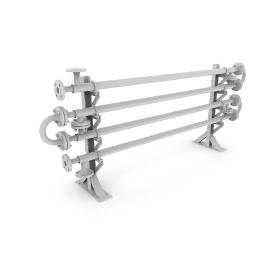
NC MANUFACTURING AND ENGINEERING
Turkey
Double tube heat exchangers (also known tube-in-tube) are designed whereby one tube is concentrically positioned within a larger tube. The double tube composition allows for unrestricted flow of product, making it the ideal heat exchanger for viscous products. The product flows through the inner tube and the service fluid flows through the surrounding shell.
Request for a quote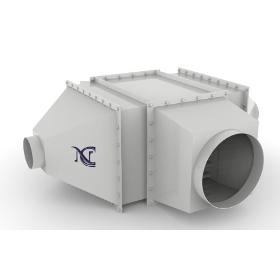
NC MANUFACTURING AND ENGINEERING
Turkey
Recuperator systems are heat exchangers that produce hot air by utilizing the energy of high-temperature waste flue gas generated in furnace systems, boiler systems and various processes. Recuperators various heating needs of facilities such as combustion air preheating and ambient heating are met and energy consumption is minimized. Compared to economizers, they have larger surface area and dimensions at the same heat capacity. They can be manufactured as finned tube and straight tube. Recuperator heat exchangers can be made from numerous materials steel, stainless steel and other special materials.
Request for a quote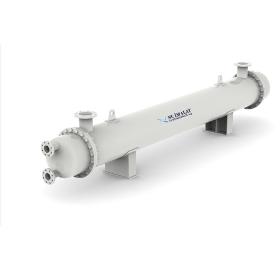
NC MANUFACTURING AND ENGINEERING
Turkey
We design and manufacture products based on the project sent by our customers or according to customer requirements. Calculations, designs and projections according to customer demand and in accordance with ASME Code Section VIII Div 1 and 2 (American Society Mechanical Engineers), API 661, API 650 (American Petroleum Institute), TEMA (Tubular Exchanger Manufacturers Association), AD-MERKBLAATTER, CODAT, DIN, EN 13445, PED 2014/68 / AB and TSE. The most common processes in the Oil & Gas, Petrochemical & Chemical, Food & Beverages and Heavy & Light Industry require a significant number of equipment to exchange heat or to storage different fluids or components. The fluid can be either liquid or gas, and one of each flows into the tube and the other flow out of the tube is used to boil, condense or cooling the fluid.
Request for a quote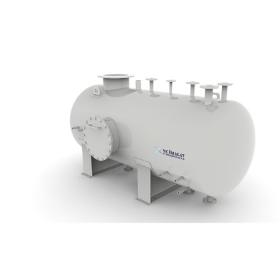
NC MANUFACTURING AND ENGINEERING
Turkey
We are specialized to design and fabricate carbon, stainless or exotic steel pressure vessels mainly for oil&gas, petrochemical and power industries in accordance with ASME Sec VIII Div.1 and EN Norms with CE mark. Most of the industrial processes need to store fluids and materials of different kinds and with different purposes.
Request for a quote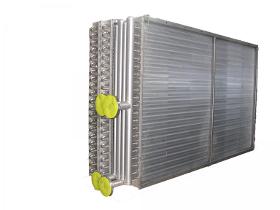
ANTHERMO GMBH
Germany
Temperature exchange between a gas and a liquid In the case of air-water heat exchangers (also called gas-water heat exchangers), there is a temperature exchange between a gas (usually air) and a liquid. Finned heat exchangers can cover various areas of application: - heating and evaporating, - cooling and condensing as well as heat recovery. In this context, lamellar heat exchangers are also called air heaters or air coolers. Air-water heat exchangers are often also used as exhaust gas heat exchangers or flue gas heat exchangers in order to recover the energy from warm or hot exhaust gases. Lamella packs for a large exchange area In order to achieve the largest possible exchange surface between the air and the medium (liquid) within the heat exchanger, lamellas or lamella packs are attached to the pipe system.
Request for a quote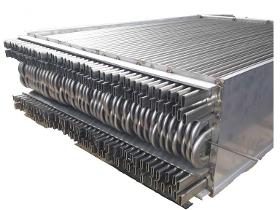
ANTHERMO GMBH
Germany
Temperature control of gaseous and liquid media Flat tube heat exchangers are generally used as air / air or air / liquid heat exchangers. Flat tube heat exchangers are used where the (exhaust) air is polluted and the installation space is limited. In heat recovery in particular, there are numerous applications for flat tube heat exchangers as so-called exhaust gas / exhaust air heat exchangers. Little installation space and less pressure loss While the rows of tubes in smooth tube heat exchangers consist of round tubes, the rows of tubes in flat tube heat exchangers have a special profile (see illustration). This special tube profile offers advantages over the round profile in certain applications. Flat tube heat exchangers require less installation space than smooth tube heat exchangers with the same exchange area and are therefore also lighter.
Request for a quote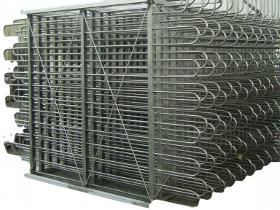
ANTHERMO GMBH
Germany
Temperature control of liquids Tube coil heat exchangers (so-called tube cooling coil heat exchangers) are generally used to control the temperature of liquids. This system can also be used to heat or cool liquids in a controlled manner. Due to their special shape, pipe coil heat exchangers are sometimes also called hairpin heat exchangers. Inexpensive applications The simple and solid structure enables it to be used in cost-effective applications. Coiled tube evaporator systems are ideally suited for brine and glycol applications. Classic variant Coiled tube evaporator systems are a classic and proven variant in the field of heat exchanger systems. Coiled tube heat exchangers are often used in ice storage systems or in the production of cold water units. In ice storage systems, coils can be used to achieve an even build-up of ice around the coils.
Request for a quote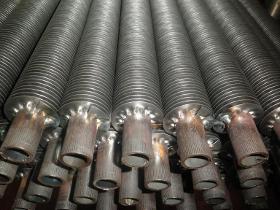
ANTHERMO GMBH
Germany
Finned tubes for efficient heat exchange Large exchange area in a small space By using finned tubes (also known as corrugated rib tubes), optimal heat exchange can be achieved in a small space. By applying so-called ribs to smooth tubes, the exchange area of the tubes is increased considerably. Finned tubes are usually used where an optimal temperature exchange between gaseous media and liquids is to be achieved. Different designs for every purpose In many cases, finned tubes are built into production machines as a component in machine and apparatus construction. Finned tubes can be designed for a variety of special application conditions. The length, the design and the ribbing can be individually adapted.
Request for a quote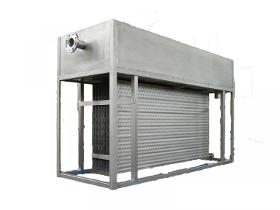
ANTHERMO GMBH
Germany
Generate cold water / flake ice continuously Proven use Falling film chillers have been used in various industrial sectors for many years. Water runs over the heat exchanger plates from a trough arranged above the heat exchanger plates. This enables a continuous heat transfer between the water and the cooling medium. Outstanding advantages The arrangement of holes in the upper tub enables targeted water distribution on the heat exchanger plates. The construction using a perforated tub has the further advantage that no contamination occurs and the liquid to be cooled is evenly distributed. Made of stainless steel The trickle cooler is made entirely of stainless steel. You can choose between different materials (see data sheet). Low boiling delay Our trickle coolers are characterized by the fact that the boiling delay is low in flooded operation, whereby overheating can be selected in dry expansion operation.
Request for a quote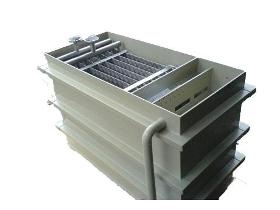
ANTHERMO GMBH
Germany
Universal use for a wide range of applications Ice stores are used in more and more areas of technology. In addition to the classic areas of application in refrigeration, air conditioning and commercial kitchen technology, ice storage systems and cold water systems are increasingly being used in process engineering systems. Cold water for subsequent production processes is generated with ice storage tanks. Ice storage systems thus provide stored cold. Use of cheap night electricity tariffs With the help of ice storage technology, cheap nighttime electricity tariffs can be used. During the night, ice is continuously built up on the plates or on the pipe coils. This ice is then available during the day as stored cooling capacity. This can significantly reduce energy costs. The cooling units can also be made smaller when using ice storage systems.
Request for a quote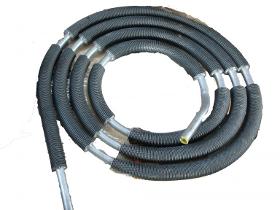
ANTHERMO GMBH
Germany
Know-how for special applications There are applications with very special requirements for the heat exchanger. Due to its decades of experience, Anthermo GmbH has the necessary know-how to be able to build special heat exchangers for special applications. So every year we build numerous heat exchangers that are a bit off the standard. Dimensioning with EDP programs With the help of EDP programs, Anthermo GmbH is also able to dimension and technically design special heat exchangers. The technical design and dimensioning is strictly based on the specifications and requirements of the customer. After the design, a three-dimensional CAD model is created. The CAD drawing approved by the customer forms the basis for production with the most modern IT-supported production systems.
Request for a quote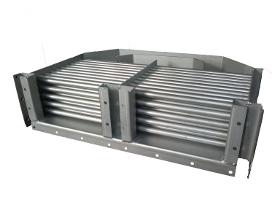
ANTHERMO GMBH
Germany
Air-water / air-air heat exchanger as smooth tube heat exchanger up to 1,000 ° C Smooth tube heat exchanger as an air / water heat exchanger In the case of air-water heat exchangers (also called gas-water heat exchangers), a temperature exchange takes place between a gas (usually air) and a liquid. As a rule, the liquid medium flows inside the pipes, while the gaseous medium flows around the pipes outside the pipes. Smooth tube heat exchangers can cover various areas of application: heating, cooling and condensing as well as heat recovery. Smooth tube heat exchanger as air-to-air heat exchanger Smooth tube heat exchangers are also often used as air-to-air heat exchangers. In this application, a gas (e.g. exhaust air or exhaust gases) flows inside the pipes and a gas (e.g. fresh air) outside the pipes around the pipes.
Request for a quote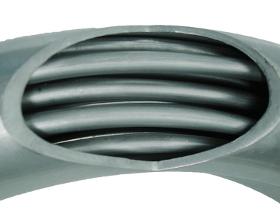
ANTHERMO GMBH
Germany
Tubes wound into a spiral shape Coaxial heat exchangers consist of two or more pipe coils, which are routed into one another and wound up in a spiral shape. The primary medium runs in countercurrent to the secondary medium. Fast temperature exchange This countercurrent design achieves a very rapid temperature transition with high efficiency between the liquids. Due to the spiral shape, the rapid temperature exchange between the liquids is achieved in a very small space. No cleaning or maintenance required Another advantage is the encapsulation of both liquids from environmental influences. There is practically no cleaning or maintenance effort due to pollution from the environment. The coaxial heat exchanger also does not require any seals that require maintenance. Condenser or evaporator function Coaxial heat exchangers can be used for both condenser and evaporator functions.
Request for a quote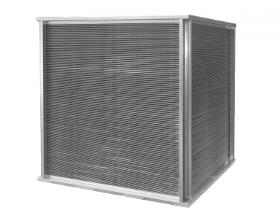
ANTHERMO GMBH
Germany
Efficient use of waste heat (up to 1.000 °C) In many production processes waste heat occurs in form of hot air which is put out to the environment without any use. Very often these hot gases are contaminated air. On the other side clean (cold) air must be warmed up for the production process. In these cases cross flow heat exchanger can reduce the energy costs. The hot air stream will be conducted in the cross or counter flow method over the cold air inside the cross flow heat exchanger. Though both air streams are strictly separated because of the construction of the heat exchanger and they don´t get mixed (leakage less than 0,5 %). Only the energy of the hot waste stream is transferred to the cold clean stream.
Request for a quote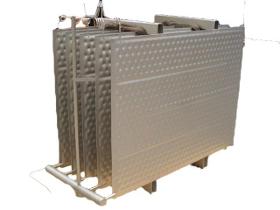
ANTHERMO GMBH
Germany
Temperation of fluids Pillow plates are used everywhere where liquids must be temperated. In dependence of application the liquids can be cooled or heated. Cause of this wide range of applications pillow plates are used in the process industry, in the cooling industry and in a lot of other industries. Pillow plates are also know as heat exchanger plates, evaporator plates, cooling plates /sheets and thermo plates / sheets. Pillow plates as air-/water-heat exchanger Additionally to the temperation of liquids pillow plates are also used as air-/liquid heat exchangers. In case of polluted or wasted air and if there are high demands for cleaning, more and more pillow plates are used as air-/water-heat exchanger. The large exchange surface and the good possibilities for cleaning are important features for this type of heat exchanger.
Request for a quote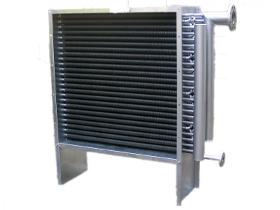
ANTHERMO GMBH
Germany
Air heat exchangers as finned tube heat exchangers Heat transfer between a gaseous media and a liquid Finned tube heat exchangers are often called air/water heat exchangers or gas/water heat exchangers. Heat transfer between a gas (for ex. air) and a liquid (for ex. water) takes place in the air-/water heat exchangers. To improve the thermal output transfer from the gas to the liquid, fins made of well heat transferring materials are put on the tubes. Very often air-/water heat exchangers are used as exhaust heat exchanger to gain the energy out of warm or hot exhaust fumes. Finned tube heat exchangers can also be used as air heater, air cooler or condenser.
Request for a quote
ANTHERMO GMBH
Germany
Customized air-water heat exchangers for industrial use Three types of air-water heat exchangers Three different designs o air-water heat exchangers The Anthermo GmbH delivers three different designs of air-water heat exchangers: Finned tube heat exchangers Lamella heat exchangers Straight tube heat exchangers These heat exchangers are designed in a way, that inside the tube water or another liquid circulates. The air flows around outside the tubes or the fins/lamellas. The connection between the fins and the tube is used to enlarge the space for heat transfer between the liquid and the gas fluid. The technical figures (for ex. amount of air, temperature, pressure, waste of air) can be different for the air-water heat exchanger. Also the operating conditions and the environment conditions can vary from application to application.
Request for a quoteDo you sell or make similar products?
Sign up to europages and have your products listed

ANTHERMO GMBH
Germany
Customized air-air heat exchanger for the industry (up to 1.000°C) Hot outgoing air and cold incoming air Very often hot exhaust gas gets out in the environment without any use. On the other hand cold incoming air must be lead into the production process and shall be warmed. This occurs for example very often within drying technology. In this case air-air heat exchangers can be used very efficient in heat recovery. As result you have great potential to save energy expenses. Three types of air-air heat exchangers The Anthermo GmbH delivers three types of different air-air-heat exchangers: cross-flow heat exchanger straight-tube heat exchanger flat-tube heat exchanger The technical figures (for ex. amount of air, temperature, pressure, waste of air) can be different for the air-air heat exchanger. Also the operating conditions and the environment conditions can vary from application to application.
Request for a quote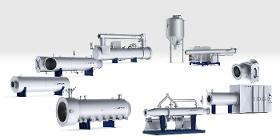
APROVIS
Germany
* High-temperature heat exchangers * Gland steam condensers
Request for a quote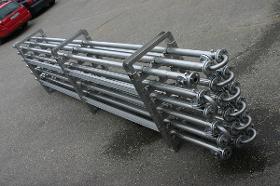
KASAG SWISS AG
Switzerland
Concepts, heat exchanger for energy recovery Energy dissipation and global warming cause damage to the nature and to the environment and thereby challenge our future. You can do a lot to prevent it. For instance, with innovative concepts and heat exchanger solutions for energy recovery so that water, wastewater, process fluids and exhaust vapours at the source in the building, in the industry, transported in the canalisation to the sewage treatment plan and even in the surface waters can be rendered useful thermally through heat transfer. Apart from the ecological aspects, investments in the realm of renewable energies are economically consequential. With KASAG as your partner for planning, design, engineering, and the construction of heat exchanger plants for energy recovery from waste heat, you are acting in favour of sustainability.
Request for a quote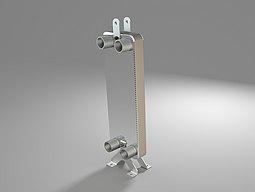
R+L HYDRAULICS GMBH
Germany
Working pressure up to 30bar Temperatur up to 195 °C Maximal 300 plates Various brackets Special versions on demand
Request for a quote
APROVIS
Germany
What you can expect from an APROVIS process gas heat exchanger: - Suitable for low and high temperature ranges - Operating pressures up to 160 bar - Compact design for use in confined spaces - Suitable for a wide range of gases - Implementation of customised solutions
Request for a quote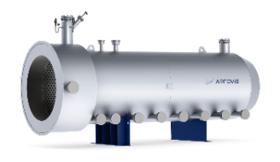
APROVIS
Germany
What you can expect from APROVIS high-temperature heat exchangers: - Transfer to water / thermal oil / air - Abrasion protection for abrasive components in the flue gas or product gas (e.g. wood gas) - Implementation of individual solutions (e.g. with regard to available space, thermal performance) - Use of various high-temperature stainless steels according to the application in question - Own measurements on site
Request for a quote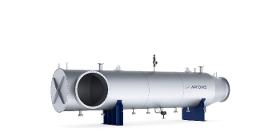
APROVIS
Germany
What you can expect from APROVIS exhaust gas heat exchangers: - Efficient hot water generation in combined heat and power plants - Heating of thermal oil as an energy source - Individual solutions and compact designs - All the main components for the exhaust gas section and gas treatment are combined under one roof: proprietary products developed in-house - Cost-saving and reliable operation of the systems - Maximum functionality, safety and service - Temperature ranges: up to 600°C on the exhaust gas side or up to more than 1,000°C in the high-temperature range - Maximum functionality, safety and service - Temperature ranges: up to 600°C on the exhaust gas side or up to more than 1,000°C in the high-temperature range - Certifications: PED 2014/68/EU, ASME Code, EAC - Can be used in all plants with exhaust gases from hydrogen, natural gas, biogas, sewage gas and special gases, plus diesel and other liquid fuels - Geared to international standards and directives
Request for a quote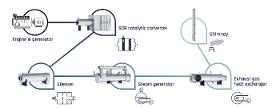
APROVIS
Germany
* Exhaust gas heat exchangers * Steam generators * Silencers * Oxidation and three-way catalytic converters * SCR catalytic converters/Diesel SCR catalytic converters * Diesel particulate filters * Chimneys
Request for a quote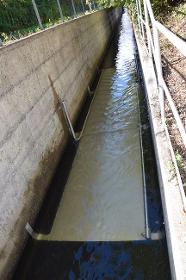
KASAG SWISS AG
Switzerland
Waste water treatment plants and surface waters have enormous energy potential. A sewage treatment plant, for example with 90 million litres of wastewater daily, reducing the wastewater temperature by using heat exchanger by around 1°C, generates a power of about 4.3 MW. The comparative potential for energy recovery from the surface water is even higher. Environmental aspect Induced by humans, water temperatures of the surface and streams have steadily increased, not least owing to the inflows from sewage water treatment. This has serious consequences on the flora and fauna. If heat is extracted from purified water in the sewage treatment plant or from surface waters and from streams, and water temperature is thereby reduced, this will have a positive effect on the entire ecological system. With KASAG heat exchanger systems, on the one hand, the energy requirement of the sewage treatment plant can be covered and, on the other, buildings in near vicinity can be heated or cooled.
Request for a quote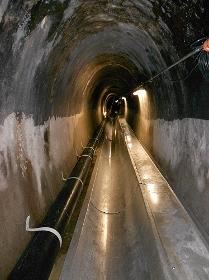
KASAG SWISS AG
Switzerland
The wastewater in the sewers is an ideal source of energy when combined with heat pumps and cooling machines, for heating and cooling of buildings. Per our experience, the minimal requirements for such a plant include: a wastewater flow of approx.. 10 l/s a wastewater temperature level of about 10°C a power requirement from 100kW (for heating and cooling from ca. 50kW). During the course of conveying wastewater to the sewage treatment plant, there are many possibilities for exploiting thermal energy. Wastewater can also be used many times over consecutively as energy source. Despite new inflows, or the confluence into larger canals, but also through heat influx from cooling systems, the change in temperature of the wastewater is mostly marginal. Innovative cities have ready energy guidelines (energy plans), based on which you can orient yourself to find out whether there is a suitable wastewater canal in your near vicinity (maximally approx. at a distance of 200 m).
Request for a quote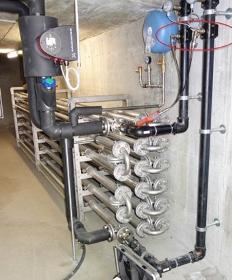
KASAG SWISS AG
Switzerland
The use of energy potential at the place of its origin is optimal. Ensuring the heat transfer in the heat exchanger is thereby a vital criterion and requires customized solutions. The torrent of sewage flow in buildings is collected in a containment volume for generating energy using heat exchanger for heating and cooling. No retention volume is necessary for continuous outflows and process heating. This can be applied, for instance, in apartment buildings, residential buildings, communal buildings, hotels, thermal baths, swimming pools as well as in different energy-intensive industries, such as in foodstuffs, chemicals and pharmaceuticals.
Request for a quote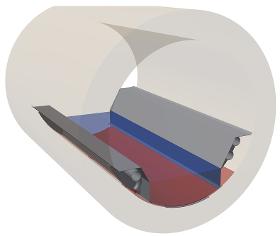
KASAG SWISS AG
Switzerland
The wastewater in the sewers is an ideal source of energy when combined with heat pumps and cooling machines, for heating and cooling of buildings. Per our experience, the minimal requirements for such a plant include: a wastewater flow of approx.. 10 l/s a wastewater temperature level of about 10°C a power requirement from 100kW (for heating and cooling from ca. 50kW). During the course of conveying wastewater to the sewage treatment plant, there are many possibilities for exploiting thermal energy. Wastewater can also be used many times over consecutively as energy source. Despite new inflows, or the confluence into larger canals, but also through heat influx from cooling systems, the change in temperature of the wastewater is mostly marginal. Innovative cities have ready energy guidelines (energy plans), based on which you can orient yourself to find out whether there is a suitable wastewater canal in your near vicinity (maximally approx. at a distance of 200 m).
Request for a quoteResults for
Heat exchangers - Import exportNumber of results
209 ProductsCountries
Company type
Category
- Heat exchangers (155)
- Gas and oil - exploitation (20)
- Oiling - machines and systems (7)
- Refrigeration plants and equipment, commercial and industrial (7)
- Diesel engines (6)
- Heat recovery systems (4)
- Chemical industry - machinery and equipment (3)
- Electric motors and parts (3)
- Boilers, industrial (2)
- Chemical and pharmaceutical industry - machinery and equipment (2)
- Energy - production plants and equipment (2)
- Energy - renewable (2)
- Mechanical engineering - custom work (2)
- Pipes and tubes, copper (2)
- Air conditioning equipment (1)
- Aluminium alloys (1)
- Anti-corrosion coatings (1)
- Boilers, cast iron (1)
- Boilers, copper (1)
- Burners, domestic heating (1)